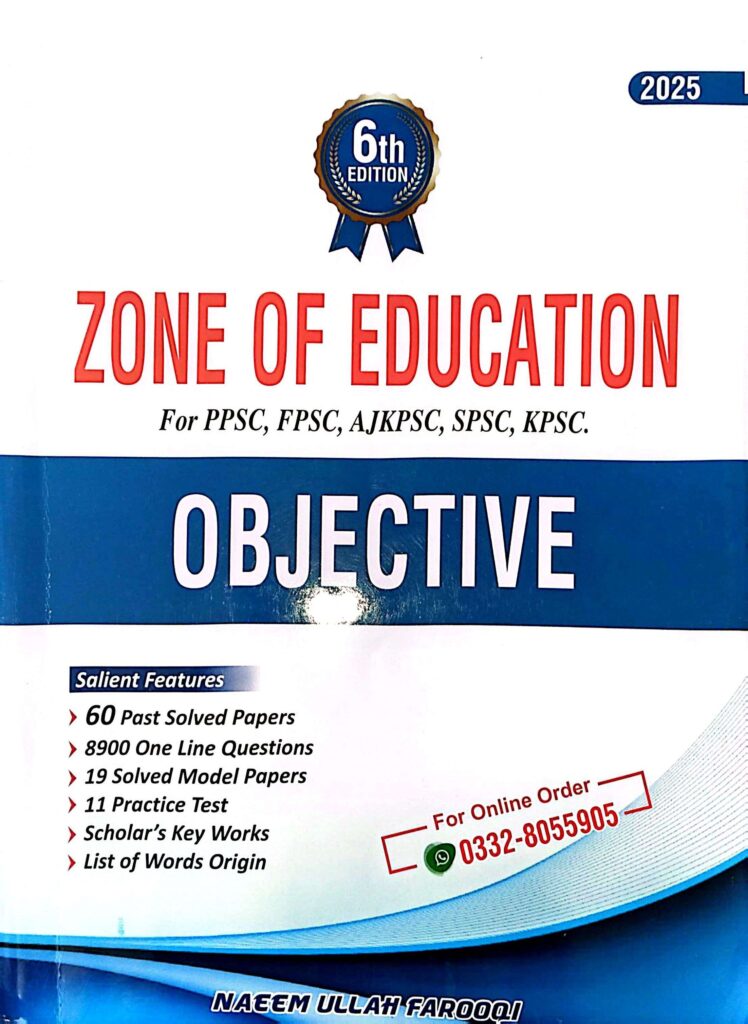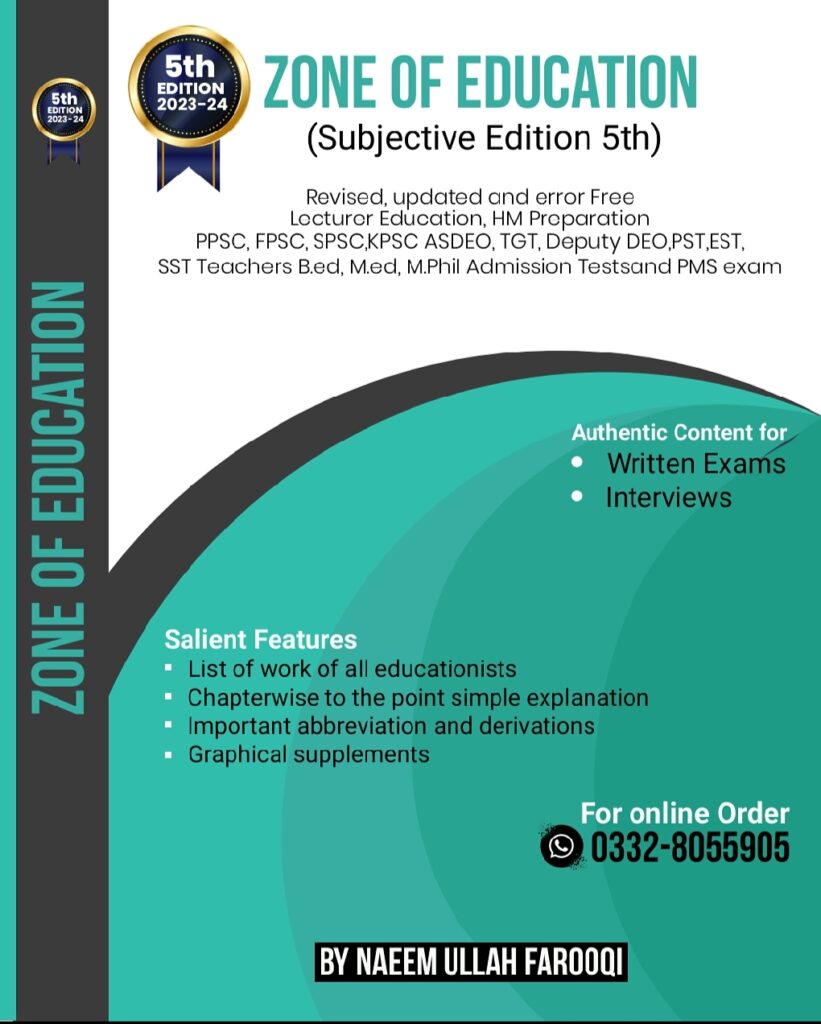Psychology
.201. Arranging objects in sequence according to one aspect is:
· (a) Seriation
· (b) Centration
· (c) Animism
· (d) Egocentrism
202. Focusing on only one characteristic is:
· (a) Seriation
· (b) Animism
· (c) Centration
· (d) Assimilation
203. The ability to logically combine relations to understand certain conclusions is:
· (a) Seriation
· (b) Transitivity
· (c) Centration
· (d) Classification
204. The phase at which a child can master a task if given appropriate help and support is:
· (a) Action zone
· (b) Zone of proximal development
· (c) Zone of maturation
· (d) Active zone
205. A sense of concern for future generations is:
· (a) Generativity
· (b) Identity
· (c) Integrity
· (d) Industry
206. The complex answer to the question “who am I?” is:
· (a) Industry
· (b) Integrity
· (c) Identity
· (d) Initiative
207. Eagerness to engage in productive work is:
· (a) Industry
· (b) Integrity
· (c) Identity
· (d) Initiative
208. Willingness to begin new activities and explore new directions is:
· (a) Industry
· (b) Generativity
· (c) Identity
· (d) Initiative
209. Sense of self-acceptance and fulfillment is:
· (a) Generativity
· (b) Identity
· (c) Integrity
· (d) Industry
210. A technique that involves changing the level of support for learning is:
· (a) Zone of maturation
· (b) Zone of proximal development
· (c) Action zone
· (d) Scaffolding
211. The value that one places on one’s characteristics, abilities, or behaviors is:
· (a) Self-esteem
· (b) Self-actualization
· (c) Self-determination
· (d) Self-efficacy
212. Learning in which a neutral stimulus becomes associated with a meaningful stimulus and acquires the capacity to elicit a similar response is:
· (a) Classical conditioning
· (b) Operant conditioning
· (c) Both a and b
· (d) None of a and b
213. Learning in which the consequences of behavior produce changes in the probability that the behavior will occur is:
· (a) Classical conditioning
· (b) Operant Conditioning
· (c) Both a and b
· (d) None of a and b
214. Memory that holds the information from the world in its original form for an instant is:
· (a) Working memory
· (b) Long-term memory
· (c) Short-term memory
· (d) Sensory memory
215. Memory in which information is retained as long as 30 seconds is:
· (a) Working memory
· (b) Sensory memory
· (c) Short-term memory
· (d) Long-term memory
216. Memory that holds a lot of information in a relatively permanent fashion is:
· (a) Working memory
· (b) Sensory memory
· (c) Short-term memory
· (d) Long-term memory
217. A general approach that views learning as an active mental process of acquiring, remembering, and using knowledge is:
· (a) Cognitive view
· (b) Social cognitive view
· (c) Behavioral view
· (d) Social constructivist view
218. A continuous process that never comes to an end is:
· (a) Learning
· (b) Evaluation
· (c) Instruction
· (d) Assessment
219. Punishment is an example of:
· (a) Positive motivation
· (b) Social cognitive view
· (c) Intrinsic motivation
· (d) Extrinsic motivation
220. Approach to motivation that emphasizes personal freedom, choice, self-determination, and striving for personal growth is:
· (a) Humanistic
· (b) Cognitive
· (c) Social
· (d) Social cognitive
221. Motivation associated with activities that are their own reward is:
· (a) Intrinsic motivation
· (b) Extrinsic motivation
· (c) Both a and b
· (d) None of a and b
222. The area of the classroom where the greatest amount of interaction takes place is:
· (a) Content area
· (b) Passive area
· (c) Zone of proximal development
· (d) Action zone
223. The approach of psychology that focuses on the analysis of components of consciousness is:
· (a) Structuralism
· (b) Functionalism
· (c) Behaviourism
· (d) Psychoanalysis
224. According to William James, understanding the activities of the mind for adjustment to the environment is important rather than the composition:
· (a) Structuralism
· (b) Functionalism
· (c) Behaviourism
· (d) Psychoanalysis
225. The school of thought that focuses its attention totally on observable and measurable aspects is:
· (a) Structuralism
· (b) Functionalism
· (c) Behaviourism
· (d) Transpersonal Psychology
226. An individual perceives things as a whole and not as a mere collection of its constituents:
· (a) Gestalt Psychology
· (b) Transpersonal Psychology
· (c) Psychoanalysis
· (d) Cognitive Psychology
227. Human behavior includes conscious, sub-conscious, and unconscious by the school of thought called:
· (a) Gestalt Psychology
· (b) Transpersonal Psychology
· (c) Psychoanalysis
· (d) Cognitive Psychology
228. What we think and how we feel in our altered states of awareness is the subject area of:
· (a) Humanistic Psychology
· (b) Transpersonal Psychology
· (c) Gestalt Psychology
· (d) Cognitive Psychology
229. Bronfenbrenner’s theory consists of how many environmental systems?
· (a) 3
· (b) 4
· (c) 5
· (d) 6
230. A setting in which the individual spends considerable time is:
· (a) Microsystem
· (b) Mesosystem
· (c) Exosystem
· (d) Macrosystem
231. Bronfenbrenner’s theory emphasizes:
· (a) Micro dimensions of environment in which child lives
· (b) Macro dimensions of environment in which child lives
· (c) Both a and b
· (d) None of a and b
232. McDougall maintained that all human behavior could be explained in terms of some:
· (a) Instinct
· (b) Punishment
· (c) Reward
· (d) Incentive
233. The main instinct picked up by Freud to account for all human behaviors in his psychoanalytical theory of motivation is:
· (a) Life instinct
· (b) Death instinct
· (c) Both a and b
· (d) None of a and b
JOIN ZONE OF EDUCATIONPK!
Discover the most comprehensive and reliable pedagogy resources in Pakistan, curated for competitive exam success. Our content covers all competitive exam MCQs, including PPSC, FPSC, AJKPSC, SPSC, and more. Designed to empower learners with top-notch material and insights, trust us for your preparation journey!



